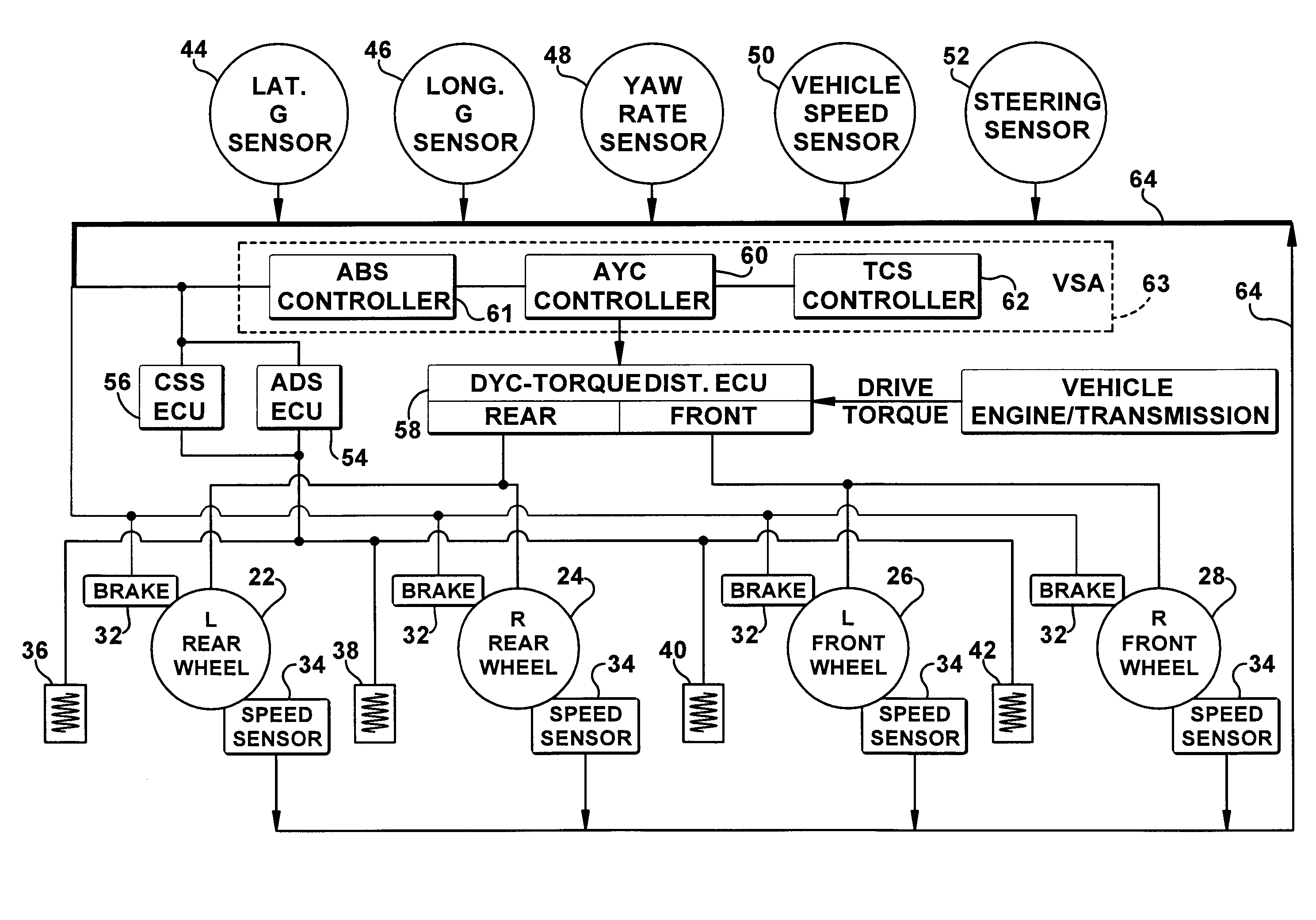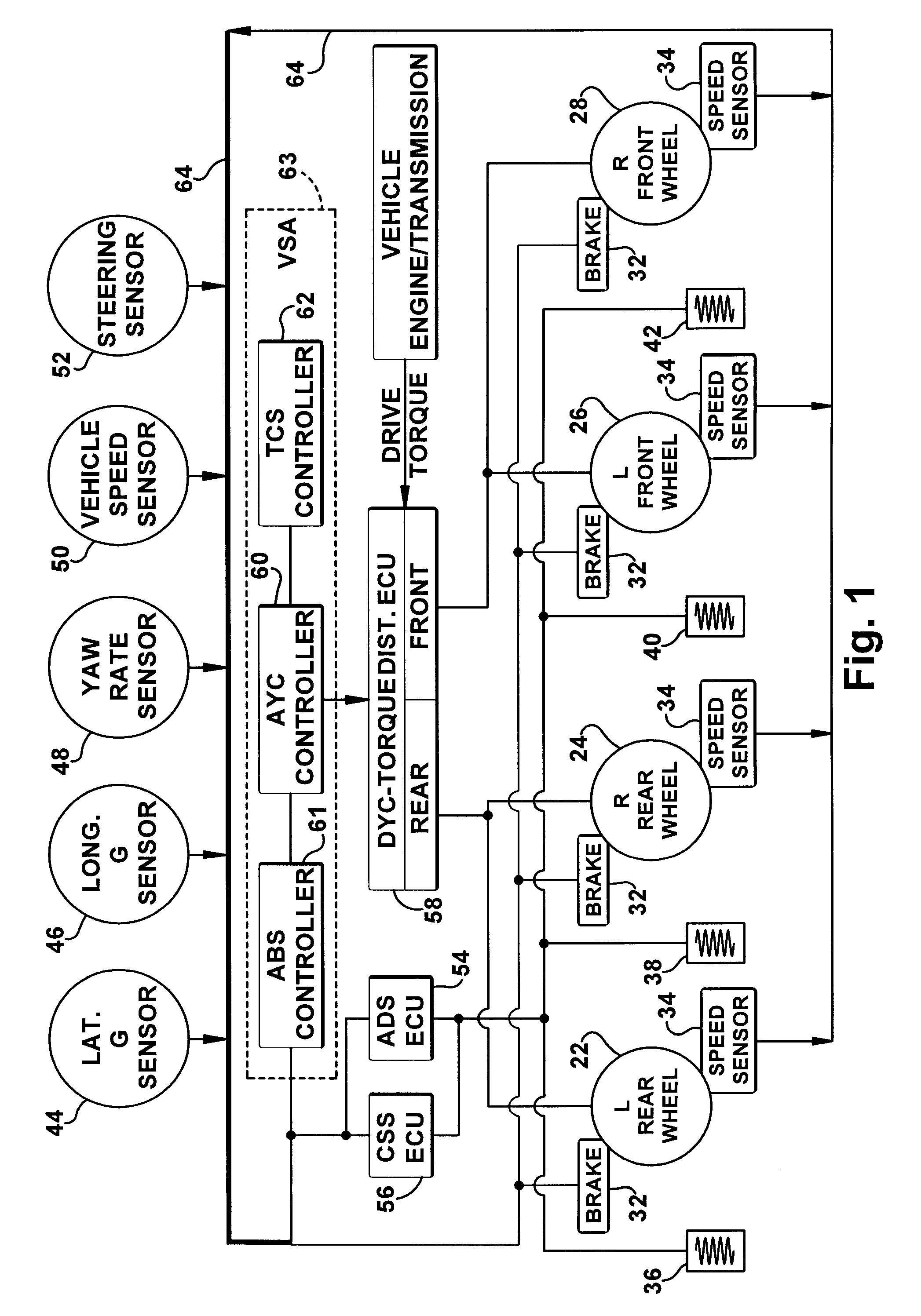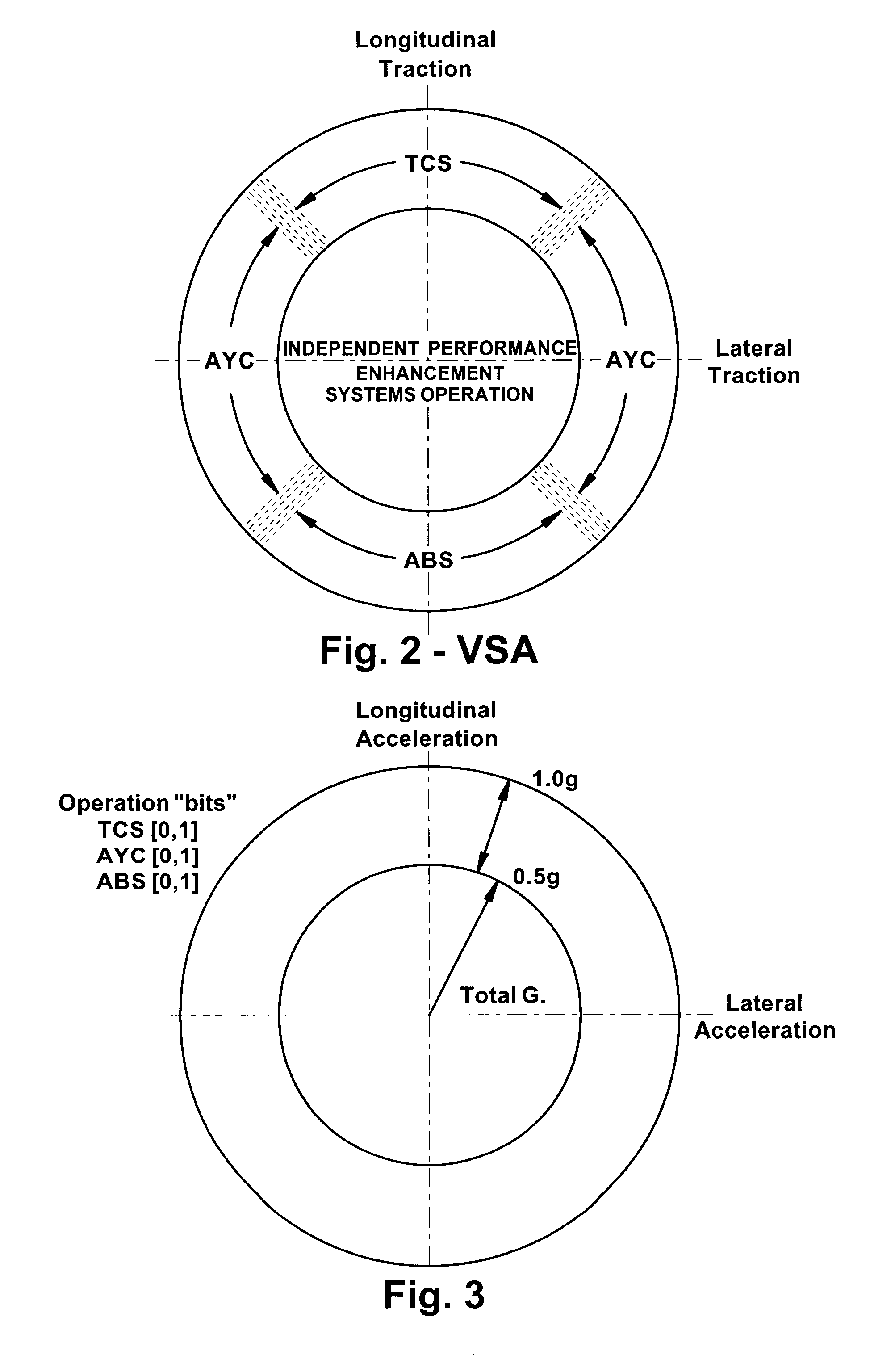Vehicle systems control for improving stability
a technology of vehicle systems and stability, applied in the direction of underwater vessels, non-deflectible wheel steering, brake components, etc., can solve the problems of conflicting torque control and power wastage, affecting the performance of ads, and slowing down the vehicl
- Summary
- Abstract
- Description
- Claims
- Application Information
AI Technical Summary
Benefits of technology
Problems solved by technology
Method used
Image
Examples
first embodiment
[0075]COOPERATIVE YAW STABILITY BY MODULATING INDIVIDUAL AXLE DRIVE TORQUE: Referring to FIGS. 1 and 2, the invention is concerned with reducing AYC differential braking intervention during stability events that have combined acceleration and turning (refer to the upper portion of FIG. 2). Through drive torque control cooperation, modulation of individual wheel driving torque (as controlled through the DYC torque distribution system) can reduce the yaw moment leading to an unstable motion to improve VSA yaw rate control smoothness and driver perception, especially during vehicle acceleration on low-mu road surfaces. According to this embodiment, the DYC drive torque distributor ECU 58 constantly monitors the AYC operation states such as AYC activation flags, vehicle stability factor and oversteer (OS) / understeer (US) indicators, which can be estimated based on the vehicle yaw rate error, AYC activation modes, target pressures, etc.
[0076]This embodiment is directed to controlling the...
second embodiment
[0088]COOPERATIVE ADS CONTROL: Referring to FIGS. 1 and 6, the invention including an improved method of controlling the stability of a vehicle is provided. This embodiment uses recognition of vehicle braking, determining the present state of an active damping system in the suspension of the vehicle, and then modifying the settings of the active damping system, if necessary, to stiffen the suspension, thus, preventing a significant shift of load in the vehicle and providing better vehicle stability. The present embodiment's adjustment of the ADS damping characteristics to minimize vehicle body motion and wheel load variations results in improving vehicle braking smoothness and stability, especially during combined braking in turning maneuvers on high mu roads. In high mu braking situations, there is considerable movement of the vehicle body which results in larger load variations at the wheels. Therefore, a stiffer suspension damping in these situations allows for better contact bet...
third embodiment
[0095]ENHANCING ADS CONTROL USING OPERATIONAL MODE INFORMATION FROM VSA COMBINED WITH THE VEHICLE OPERATING STATE: Referring to FIGS. 1, 3, and 7, the invention, including an improved method of controlling the overall maneuverability, ride comfort, and stability of a vehicle is provided. This improved method uses a technique to infer the road surface qualities including the road friction coefficient (mu) and road roughness index when combined with stability control intervention (TCS, AYC, ABS) operational status. The method then modifies the settings of the Active Damping System (ADS), if necessary, to stiffen the suspension damping control, thus preventing a significant shift of load in the vehicle, or to soften the suspension damping control for improving vehicle drivability and comfort. The adjustment of the ADS overrides any damping characteristics that were pre-selected by the driver or preset by the vehicle.
[0096]The operational (ON / OFF) status of an AYC, ABS, and / or Traction ...
PUM
 Login to View More
Login to View More Abstract
Description
Claims
Application Information
 Login to View More
Login to View More - R&D
- Intellectual Property
- Life Sciences
- Materials
- Tech Scout
- Unparalleled Data Quality
- Higher Quality Content
- 60% Fewer Hallucinations
Browse by: Latest US Patents, China's latest patents, Technical Efficacy Thesaurus, Application Domain, Technology Topic, Popular Technical Reports.
© 2025 PatSnap. All rights reserved.Legal|Privacy policy|Modern Slavery Act Transparency Statement|Sitemap|About US| Contact US: help@patsnap.com



